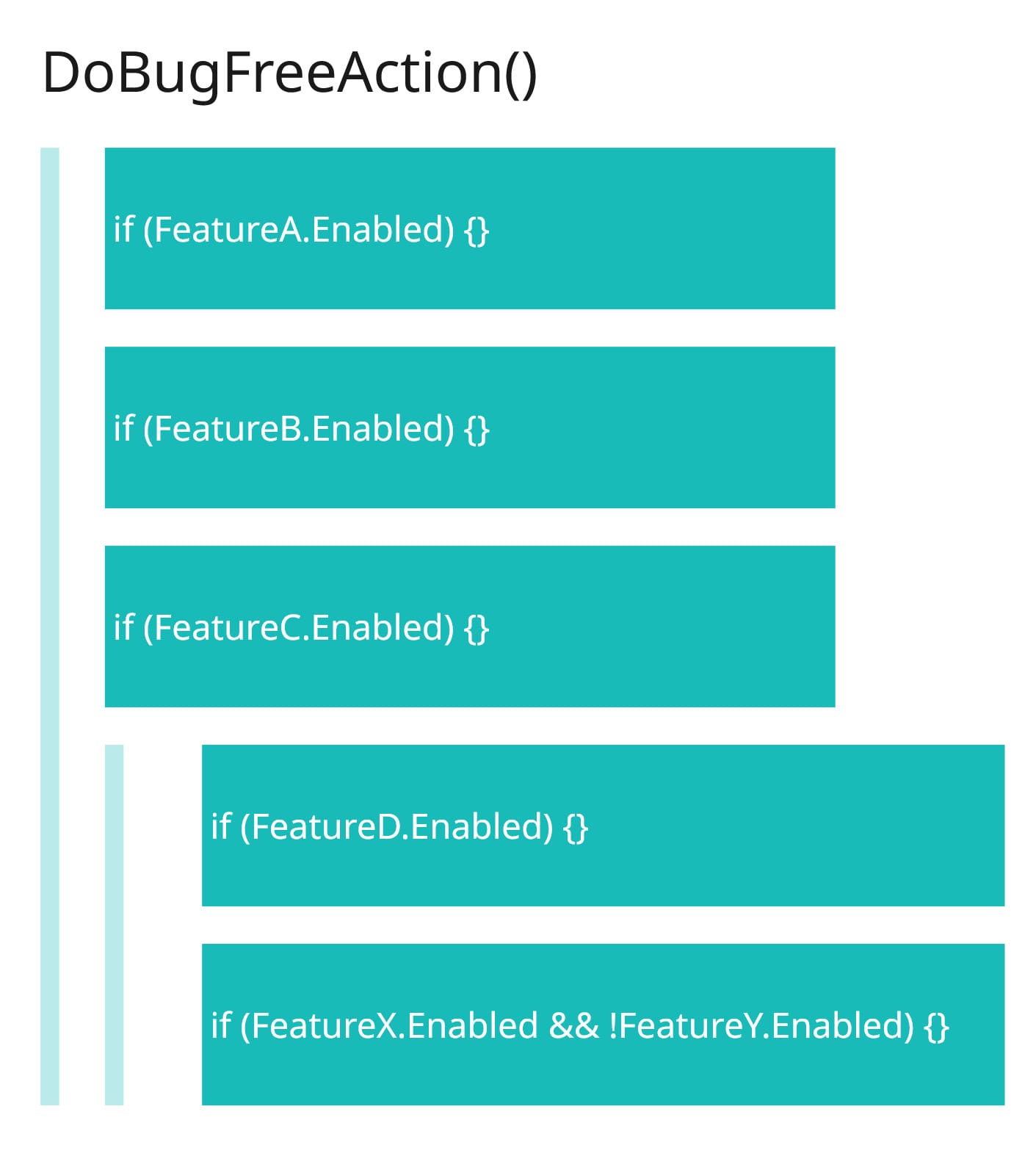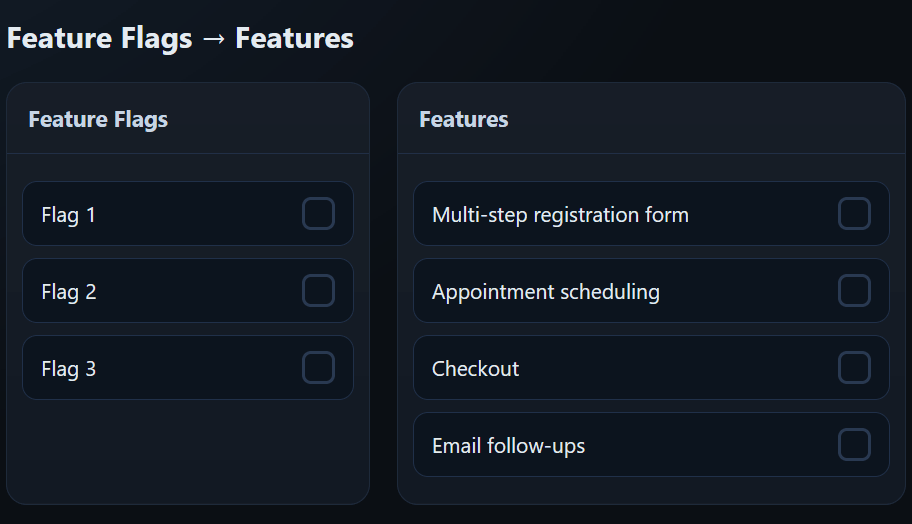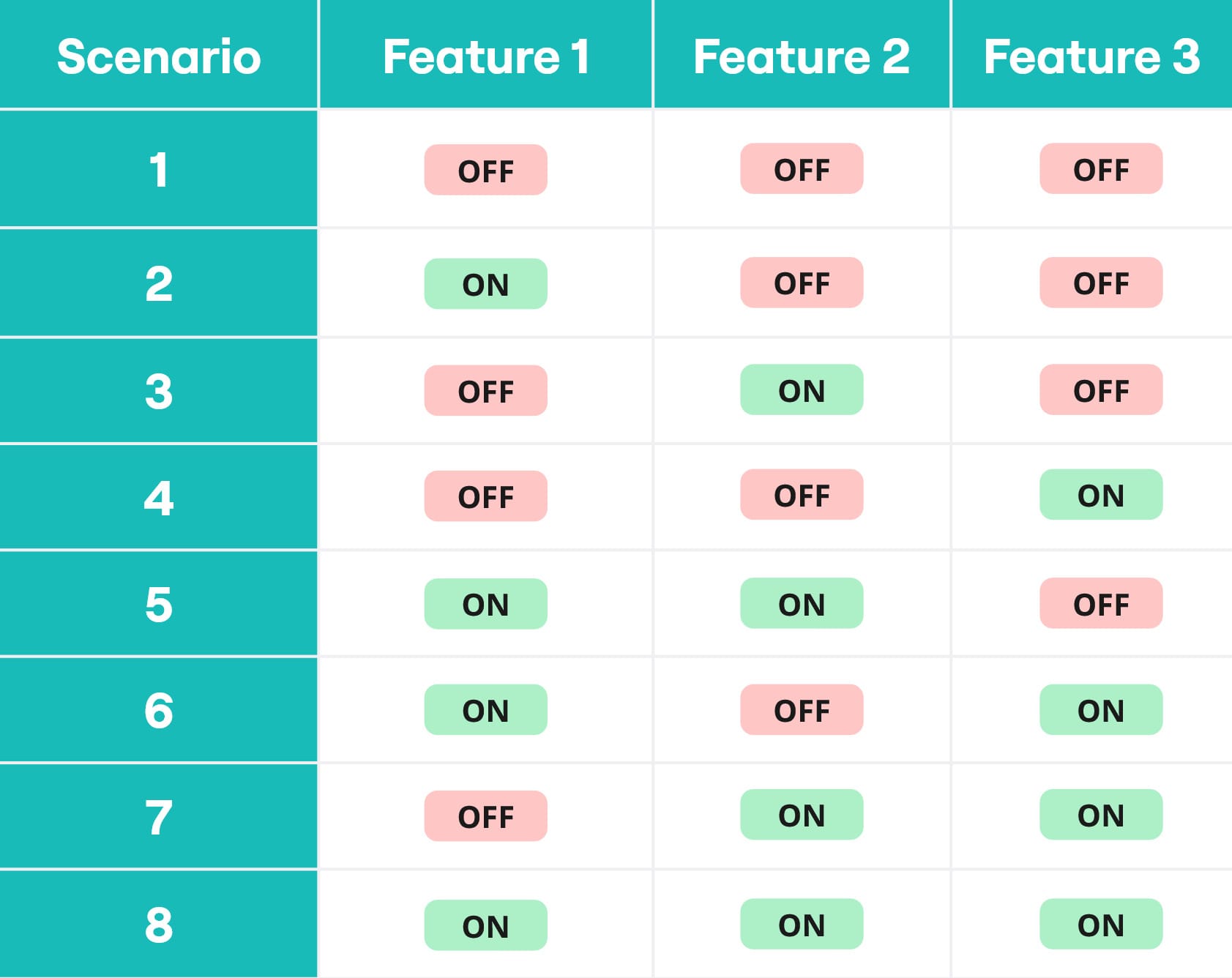Feature flags are not free: how to avoid the trap

Once I was on an interview and the manager asked me about feature flags. For me, the answer was simple: it is just a toggle that hides a product feature behind it, right? The manager nodded, and for many years, I was sure this was correct.
Technically, I was not wrong. Feature flags really are toggles, and in advanced cases their values can be evaluated based on some criteria. That is the simple truth.
But the illusion of simplicity ends when you start to integrate them into your workflow. At first, it feels great: you add a few if-statements to gate new features for the next release, and everything looks safe. But after several releases, you already have many flags in the code. If you work with microservices, the same flag is now spread across different services. Later, you add one more flag to an existing condition, and now the logic depends not on one flag, but on a few.
One day, you face a bug in a simple product flow. It should be easy to fix, but when you open the code, you see ten feature flag conditions, some nested inside each other. At this moment, you are no longer so optimistic about feature flags.
Feature flags start as simple toggles but quickly grow into a system that can make or break your release process. This article is not about what feature flags are. Instead, it is about how to manage them at scale, avoid the common traps, and use them as a tool for safe and reliable delivery.
Why feature flags become complex
When you first introduce feature flags, everything looks fine. You wrap a new piece of functionality in a simple if statement and move on. This is the happy path: quick to implement, no risk, and the team feels safe about releasing.
But things change fast. After a few releases, you already have a dozen flags. Some of them are still active, some are half-forgotten, and some are reused in different services. That is where the dark path starts:
- Nested conditions appear when you stack flags inside other flags.
- Abandoned flags stay in the code because nobody owns their retirement.
- Testing nightmares come when QA must check every possible combination of flags.

Imagine fixing a bug in a simple intake flow. You expect one or two conditions, but instead you find ten flags controlling the same area. Some are old, some are only used in staging, some nobody remembers. Suddenly, a five-minute fix turns into a risky change.
This is the reality of feature flags at scale. Without structure and governance, what was once a safety tool becomes a source of confusion and hidden risk. That is why managing feature flags is not just a coding practice, but a leadership responsibility.
Checklist for sustainable feature flags
Feature flags can either help you ship safely or drown your codebase in complexity. The difference is not in the flags themselves, but in how you manage them. Here is a checklist I recommend for building a sustainable process.
Define the scope
Decide what should and should not be gated.
- Use flags for real product features or risky changes.
- Avoid wrapping every small user story.
- Gate bugfixes only if they are high-risk and you need a kill-switch.
- In distributed systems, consider shared flags across services to simplify governance.
Scope decisions are the foundation. Without alignment here, you’ll end up with flags nobody can explain.
Set the naming convention
Flags without a standard naming pattern quickly become a mess.
- Include a backlog or ticket ID in the name.
- Add a type prefix (e.g.,
Release_,Ops_,Experiment_). - Keep names human-readable.
Example: Release_1234_LiveChat.
A good name makes flags searchable, traceable, and self-explanatory.
If you are surprised that there are different types of feature flags, I recommend reading this article. It has nice diagrams explaining each type of feature flag.
Ensure tracking and visibility
If the only way to find a flag is to read the code, you are already in trouble.
- Maintain a registry of flags (manual list, tool, or platform).
- Link flags to backlog items so the product team has visibility.
- Use a feature management platform if possible (Azure App Config, LaunchDarkly, Unleash).
For us, Azure App Config plus a “Feature Flag” field in work items gave the best balance of visibility and control. We rolled out App Config across 30 services, which taught us a lot about scaling feature flag governance in a microservice environment. If you want the full story, I wrote about that rollout here.
Manage the lifecycle

Every flag must have an expiration date. Without lifecycle rules, old flags will silently pollute your code.
- Define lifecycle stages: Introduced → In Use → Released → Cleanup → Retired.
- Document who owns cleanup.
- Never delete a flag until all services have removed it from their code.
The lifecycle policy should be written down and agreed upon. Otherwise, cleanup never happens.
Clarify responsibilities
Flags touch product, QA, and engineering. Without clear ownership, they slip through the cracks.
- Developers: create and implement flags.
- QA: test combinations and verify removals.
- Product/Delivery: decide when a flag is enabled or retired.
Avoid locking responsibility to one person. Give teams autonomy, but expect discipline.
Handle testing and dependencies
Feature flags multiply test cases. Plan for it early.
- Give QA access to toggle flags in test environments.
- Avoid flag dependencies, but if they appear, document and track them.
- Regularly review which combinations are meaningful, not just possible.
Uncontrolled dependencies are one of the fastest ways to make flags unmanageable.

This checklist does not remove complexity, but it gives you control over it. With governance, feature flags stay a safety net instead of becoming a hidden risk.
Common pitfalls to avoid
Even with the right intentions, feature flags can go wrong very fast. Over the years, I have seen the same problems appear again and again, regardless of team size or technology stack.
Flags without a retirement plan
The fastest way to destroy the value of feature flags is to never remove them. Old flags stay in the codebase, and nobody wants to touch them because it is unclear if they are still in use. Developers hesitate to clean them up, new team members are afraid of breaking something, and the list of active flags grows longer than the list of actual product features. At this point, feature flags stop being a safety net and become dead weight. Without a retirement plan, your codebase will slowly rot.
QA/Test explosion

Another common pitfall is the explosion of test cases. Every new flag multiplies the possible combinations your QA team must verify. With only three flags, you already have eight possible combinations. With ten, the number becomes impossible to cover in practice. QA engineers either waste time testing irrelevant scenarios or ignore combinations altogether, which means real bugs slip through. If you do not address this early, you will end up with either blocked releases or missed issues in production.
Cross-Service inconsistencies
In a microservice environment, the same flag often lives in multiple services. If those services are not updated at the same time, inconsistencies appear. A feature may behave differently depending on which service you call, and rollback strategies that work in one service may fail in another. This problem is especially painful in distributed teams, where coordination is already hard. Without discipline, a single feature flag can cause subtle, environment-specific bugs that are very hard to trace.
Dependency chain
The most dangerous pitfall is creating dependencies between flags. At first it seems harmless to add one flag on top of another, but soon you have nested conditions that nobody fully understands. Debugging becomes painful because features depend on multiple flags being in the right state at the same time. Removing such flags later is almost impossible because they are entangled with others. The more dependencies you allow, the less predictable your system becomes.
Feature flags are powerful, but they are not free. Each new flag introduces overhead that needs to be managed. These pitfalls are not just technical mistakes, they are process failures. If your team ignores them, feature flags will shift from a safety tool into a hidden liability that slows you down instead of helping you move faster.
Conclusion: feature flags as a leadership tool
It is easy to think about feature flags as simple toggles in the code. In reality, they are process tools. They change how you release, how you test, and how you coordinate between teams.
Success with feature flags has little to do with writing if statements. It depends on governance, on how you define their lifecycle, and on the discipline of the team that manages them. Without structure, flags turn into clutter. With structure, they become a way to release faster and safer.
If you are leading a team, treat feature flags as part of your release strategy, not just a coding trick. Start small, agree on rules, and be consistent about cleanup.
Here is a simple call to action: audit your current flags. How many are still active, and how many should have been retired already? The answer will tell you how healthy your process really is.